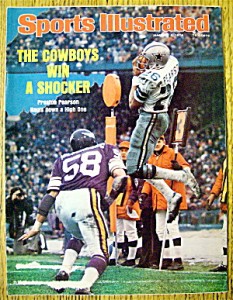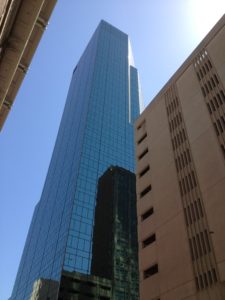In the aftermath of my relocation to Texas I’ve spent evenings going through all the boxes in the garage, merging and purging as the items dictate. I think it was Erma Bombeck who said, “When you see how quickly things accumulate on their own, you wonder why you bother to save anything on purpose.”
Among the boxes I came across a manila envelope full of papers and old clippings my parents sent to me some time ago. One item was an unremarkable white window envelope with a postmark of April 6, 1965 and a return address of 200 First Street SW, Rochester, Minnesota. Inside was an itemized billing statement for $329 from the Mayo Clinic.
I’m not sure how far $329 would go at the Mayo Clinic today, but back then it covered all the lab tests, exams, X-rays, anesthesia and surgery to remove my right eye.
I was 20 months old at the time. The diagnosis was retinal blastoma, a malignant tumor on my retina. From what I understand, it was a scary time for my parents and grandparents. My Grandma Thompson told me about her conversation with the doctor after the surgery. She asked when they would fit me with an artificial eye. He answered, “If he’s still alive in six months, bring him back.” A response which, though poor bedside manner, is likely more indicative of how little they knew about cancer 40 plus years ago. They were worried the tumor had spread. Thank God, it didn’t.
Because I grew up with it, my brain made all the adjustments early on. I can judge distances with no problem. So it’s no big deal to me. I rarely think about it. In fact, I have no memory of what it’s like to see with two eyes. I literally can’t imagine how a person would focus two eyes on one object. It seems like extra work to me.
There are advantages to having one eye. I don’t have to squint when looking through a microscope or shooting a gun. And when the box of contact lenses says “90 day supply”? For you. 180 days for me. When I fly I always sit by the window on the left side. That way even if someone occupies the seat next to me, it still feels like there’s no one there. My own built in anti-claustrophobia mechanism. No stimulus, no response.
When discussing eyesight or the lack thereof, often people will close one eye to imagine what it would be like. The thing is, when you close a good eye, you still see black. I see nothing. It’s like trying to read a book with your elbow.
Friends who know me well have used my plastic eye to their friendly advantage. When playing driveway basketball my buddies Doug, Mark, Dave, Jeff, Ed and Kevin would remind each other to “set the pick on Thompson’s right. It’s his blind side.” And the lack of peripheral vision has caused me to bump into door jams, people and parking meters to name but a few embarrassments. It’s also one way I measure the depth of friendships. When people start cracking one-eye jokes I know they are comfortable with me. And I with them.
This past summer I forgot to order my contact lenses before the current supply ran out. So I was wearing my glasses until they arrived in the mail. One Saturday was a “mow the yard, clean the garage, run errands” kind of day. At the end of it all I happened to glance in the mirror and saw the right lens of my glasses completely covered with dirt, grease and sweat. Superman couldn’t have seen through that lens. No wonder the clerk at Home Depot was smiling. I looked like a complete dork.
The dirt was less than an inch away from my eye, but I couldn’t see it.
Blind spots are that way. Right in front of our face, yet we can’t see them. I walked around all day, oblivious to the obvious. It took the unflinching honesty of a mirror to show the smudges I couldn’t see.
Mirrors can help with a physical blind spot. But the best remedy for emotional, relational and spiritual blind spots is the unflinching honesty of a faithful friend. Someone who knows you well and loves you enough to not allow you to go bumping blindly along.
The past twelve months have been the most traumatic and stressful year of my life. The smartest thing I did in the midst of the pain and confusion was to gather an inner circle of faithful friends who were committed to my personal growth. I asked them to hold me accountable and gave them all permission to point out my blind spots, which they did.
Sometimes it made me mad to hear their observations. Sometimes their counsel was 180 degrees from the direction my impetuous heart wanted to go. Yet I deferred to their wisdom because I trusted their heart and commitment to me. I’m glad I did. The Bible says that “faithful are the wounds of a friend” (Proverbs 27:6) It’s true. God used them greatly in my healing process. I’m a better person for having been “wounded” by them.
Crisis or not in your life, give the people in your inner circle permission to point out your blind spots. If we are serious about becoming the men and women God wants us to be, then we can’t afford to have any “yes” people in our life. Surrounding yourself with people who validate your blindness is great foolishness.
Don’t be the leader of your own rubber stamp parade. Allow others to speak truth into your life by pointing out what you can’t see. You’ll be a better person for it.
Todd A. Thompson – October 23, 2007


